Campus Sustainability Incubator Fund 2017
< Go back to main Incubator Award page
< Go back to main Incubator Award page
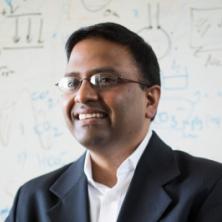
The Varanasi research group has developed a technology that uses electric fields to force escaping vapor from power plant towers to condense on a device placed near the cooling tower outlets, re-introducing the water back into the cooling cycle and greatly reducing water losses for the plant.
They have a lab-scale prototype and wish to install a pilot on the cooling towers of the MIT Cogeneration Plant to test for efficiency and durability and to optimize the device. They estimate that they can save MIT 15M gallons of water a year (=$100K), for only a $10K added operational cost.
According to studies by the State Department, the United States is on a path to an extreme freshwater shortage by 2030. The U.S.’s largest water consumer is power plants. Power plants use 139 billion gallons of freshwater per day for cooling, which amounts to 50% of total U.S. freshwater withdrawals. In a power plant like the MIT Cogeneration Plant (20MW), water losses are 300 gallons/minute, costing $500K/year. Serious water efficiency enhancements, that do not sacrifice fuel efficiency, have to be introduced to cooling systems in order to meet our growing energy demand.
The Varanasi group proposes to use their water plume collection technology to reduce water usage of cooling towers at the MIT Cogeneration Power plant. They are working in collaboration with MITOS and MIT Facilities to develop a plan for the study. They will first study the water data collected by MIT Facilities to better understand water usage and identify the losses and opportunities for improvement. They will then place additional sensors at the cooling towers to get a better understanding of the vapor conditions and the plume characteristics. Finally, based on the previous information, they will place our collection device on top of a cooling tower, measure the collection in different weather conditions and for various properties of the applied electric field and use the collected information to further optimize the product.
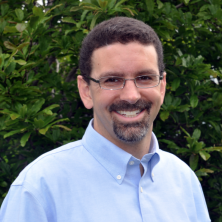
A collaborative and interdisciplinary team of researchers, headed by Gregory, aims to implement a quantitative approach to evaluate the life cycle economic and environmental impacts of proposed building designs for the MIT campus. The approach is specifically intended for the early stages of the planning and design process when there are many options, but only limited information is available.
The project contains two main elements: (1) characterizing MIT’s planning and design process for buildings, with an emphasis on opportunities to incorporate quantitative economic and environmental impact assessments, and (2) implementation of such quantitative assessments.
Building energy consumption was responsible for 97% of MIT’s 2016 greenhouse gas inventory. As such, reducing building environmental impacts is critical to reducing MIT’s environmental footprint. While MIT has worked hard to reduce building energy consumption, there is an opportunity to analyze and optimize the embodied and operational costs and environmental impacts of candidate building designs. Such a rigorous process will help ensure that MIT is seeking sustainable building solutions that consider an integrated approach to energy consumption and building materials.
The project team is made up of researchers who specialize in quantifying early-stage economic and environmental impacts in buildings (Randolph Kirchain and Jeremy Gregory), leaders in MIT’s Campus Construction group (Richard Amster, Wade Berner), and an architect in the Systems Performance and Turnover team of the Campus Construction group who specialize in sustainable design (Randa Ghattas). The team will start with a single building project on MIT’s campus in the planning stage as a test case and use the findings of the case to develop recommendations for an approach that can be used in all campus construction projects.
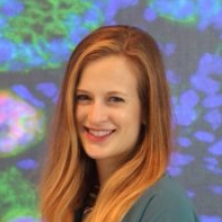
In an effort to reduce waste, a team in the MIT Chemical Engineering Department and MIT Green Labs launched a laboratory glove-recycling program in 2016. The team aims to investigate the feasibility of expanding the program to other laboratories and whether, holistically, laboratory glove recycling actually is “upcycling”.
The purpose is to compare the benefits of material recovery with the burden of the recycling process. In order to determine if there is a net environmental benefit to glove recycling, it will be key to better understand the differences between MIT’s current disposal method of burning gloves for waste-to-energy versus repurposing for use in new materials.
Laboratory spaces provide a tremendous opportunity for reducing environmental impact and helping MIT reach sustainability and climate reduction goals. Over 7000 researchers at MIT work in labs. Researchers in “wet” labs use disposable gloves as personal protective equipment. In a pilot program in 2016, the Department of Chemical Engineering and MIT Green Labs participants collected over 400 pounds of lab gloves in six months, from about 30 researchers in 10 labs. In setting up the program, they investigated industrial and non-profit partners for glove recycling and partnered with Terracycle. On campus at MIT, they collected uncontaminated gloves in a cubic yard box in the basement of Building 66. Once full, the cubic yard box was then shipped to a facility in New Jersey, where the gloves are cryogenically frozen and grinded into a fine powder to be used in new rubber or plastic based applications. If just half the lab researchers at MIT collected and recycled one pair of gloves a day, over 10 tons of gloves would accumulate per year.
Now that the pilot program has proven to be successful, the team sees an opportunity to assess the feasibility of expanding the program. They aim to perform life cycle analysis on glove recycling, encompassing materials that go into making gloves, using, and re-purposing. Most used gloves at MIT either end up in the trash (uncontaminated) or in a hazardous waste stream (contaminated). Data will be collected on the traditional waste-to-energy disposal (transportation distances, emissions, composition and destination of combustion by-products) of lab gloves in order to assess the net environmental benefit of the project. Data will also be collected on the glove recycling processes (transportation distances, energy and material requirements, and destination of recovered materials).
At the end of the project, the team will determine if recycling gloves has a net environmental benefit. If glove recycling is beneficial, then this project will demonstrate that an integrated Institute-wide program with recycling, facilities, EHS and researchers can and should be established.

Dahan is receiving funding to collaborate with Professor Christopher Knittel of the Sloan School of Management, Wade Berner of MIT Facilities, and undergraduate Manuel Mundo to investigate the effectiveness of the fault detection and diagnostic (FDD) software MIT and other universities use to prevent energy waste in HVAC systems.
For several years, MIT’s FDD system has been collecting data on over 70 campus buildings, and alerting staff when an energy-wasting “fault” is detected. Dahan will apply machine learning and data analysis techniques to this data in order to understand the actual energy savings associated with correcting different types of system faults. The project will aid MIT Facilities in determining which faults to prioritize and help inform a cost-benefit analysis of installing FDD systems in more campus buildings.
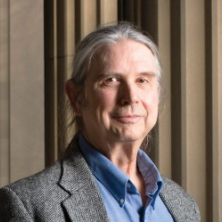
The Campus Sustainability Incubator Fund was made possible through a generous gift from Malcom M. Strandberg. Malcom served as Research and Development Chief Architect at Aspect Software for 32 years, with a career in technology spanning nearly four decades. Passionate about sustainable living, he has created a “Tech Village” model for small-scale, high-density green communities.
Inspired by his late father, long-time MIT Physics professor Malcom W.P. “Woody” Strandberg, PhD ’48, Malcom has directed other parts of his gift to MIT’s D-Lab, to the MIT Office of Engineering Outreach’s STEM program, and to sustainability projects at the Priscilla King Gray Public Service Center.
In a recent interview in the MIT Technology review, Malcom said he is excited to be plugged into MIT’s work to promote the health of the planet and is confident that the Institute will be a global leader in innovative approaches to sustainability. “If MIT shows it can make progress in these areas, then hopefully other places will try to do it as well,” he said.
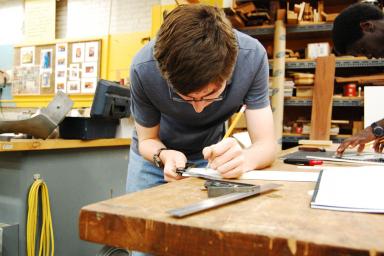
The Campus Sustainability Incubator Fund seeks to enable MIT community members to use the MIT campus as a test bed for research in sustainable operations, management and design. The seed funds enable teams of students, faculty, and researchers to explore the physical facility and social context in which they are working, living and learning at MIT. The first round of funding was awarded in summer 2017 to the teams listed below. The fund was made possible through a generous gift from Malcom M. Strandberg. Join us in solving for a low carbon future, high performance building design, resilient ecosystems, zero waste and other relevant challenges.